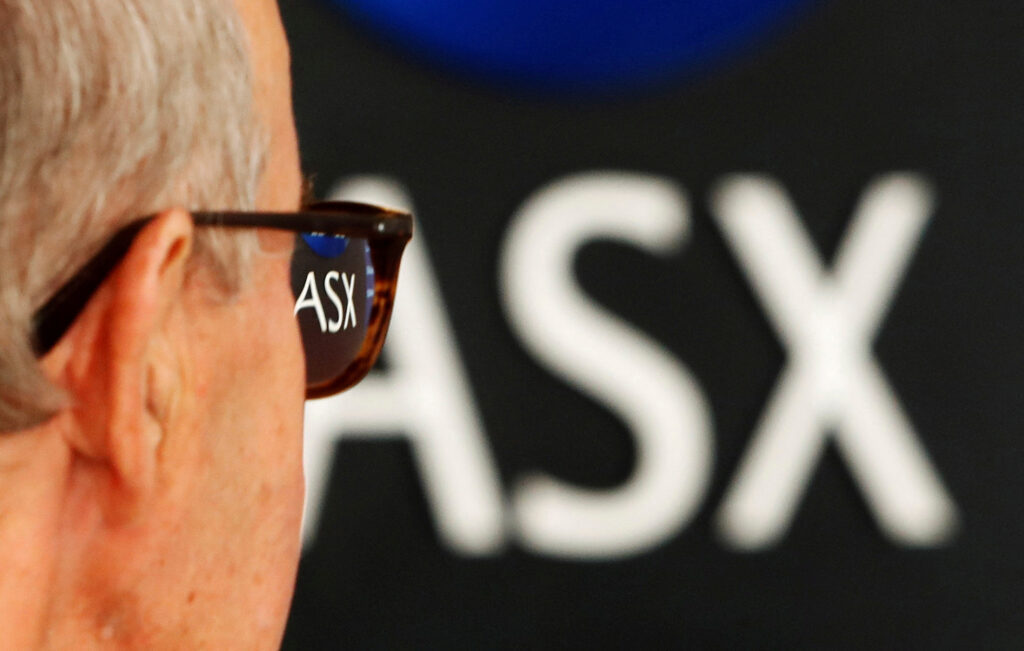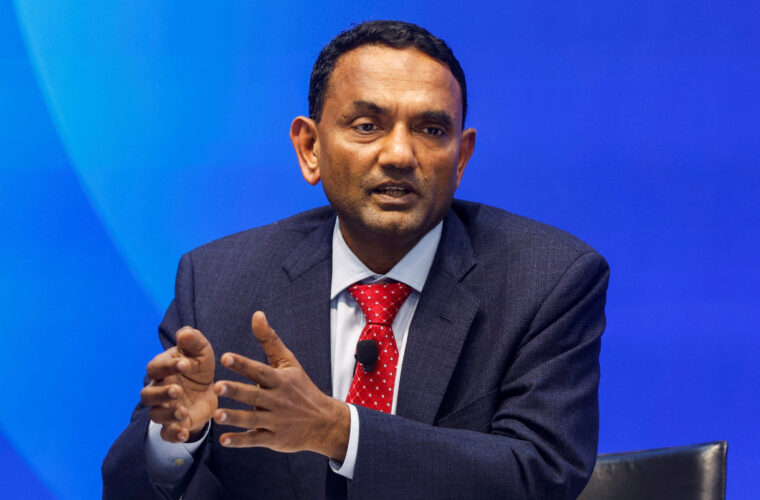
By Byron Kaye
SYDNEY (Reuters) – In a Sydney hotel conference room in May, Tim Hogben, the head of securities and payments for ASX Ltd, which runs the Australian stock exchange, told traders, share registry operators and clearing house representatives what they were hoping to hear.
A rebuild of the exchange’s aging software using blockchain-based technology was largely ready after seven years of development, putting ASX on the verge of a world-first transformation that would enable it to boost trading volumes and compete more aggressively with global rivals.
“Ninety-six percent of the software is currently in an operating-and-test environment. That 96% of that software is working,” Hogben told a Stockbrokers and Investment Advisers Association conference, in footage seen by Reuters. “If it wasn’t working, you’d be hearing about it, let me tell you.”
In November, ASX abandoned the project, citing dysfunctional management, concerns about the product’s complexity and scalability, and difficulty finding experts to support it. The axing came after new CEO Helen Lofthouse commissioned an Accenture review that found the rebuild was just 63% delivered and almost half the code needed to be rewritten.
More than a dozen brokers, other market participants and people directly involved in the blockchain project told Reuters the failure had shaken trust in the Australian exchange operator. Some expressed dismay over the time and costs they contributed to the doomed endeavour and ASX’s repeat assurances that all was well with the upgrade, which had faced five delays since an initially scheduled 2020 launch.
The experience also raised questions of a mismatch between the promises and reality of the technology that underpins cryptocurrencies. Use of a distributed ledger in Australia’s critical financial infrastructure would have been one of the most significant applications of blockchain-based systems in a mainstream corporate setting.
“The ASX could have chosen a steady and stable clearing and settlement system (but) chose a cutting edge, bleeding edge technology that was unproven, untried,” said Michael Somes, general counsel of Cboe Australia, a securities and derivatives exchange involved in the project.
“ASX’s choices have resulted in one of the biggest critical service stuff-ups seen in financial markets globally.” On top of the A$245-A$255 million ($164-171 million) charge ASX plans to take for the debacle, market players estimate that together they spent about that again preparing for the rollout, including on software upgrades, airfares and employee hours spent attending webinars and consultations. At a parliamentary hearing this month, ASX apologised for the failure but denied misleading the market or regulators. Chairman Damian Roche, when asked by lawmakers about a statement in the company’s 2021 annual report that the project had “moved from the design and build phase to testing and delivery”, said the claim referred to “functional” parts of the software, not “non-functional” parts like security and scalability.
An ASX spokesperson told Reuters in an email that the company gave project updates based on the latest available information and some challenges “only became apparent as we reached the latter stages”.
SCOPE CREEP
ASX’s quest to replace its platform that facilitates trades — known as CHESS, for Clearing House Electronic Subregister System — began under then-CEO Elmer Funke Kupper in 2015, when there was global fascination with cryptocurrency and blockchain.
After New York startup Digital Asset Holdings showed ASX executives a test transaction on its blockchain software, ASX in early 2016 signed the little-known company to begin exploratory work on an overhaul. ASX bought a 5% stake in Digital Asset.
Two months later Funke Kupper quit over bribery allegations relating to a previous role; he was cleared. ASX pressed on with the rebuild, and raised its holding in Digital Asset to 8.5%. Under Funke Kupper’s successor, Dominic Stevens, the exchange operator went from no market consultation to extensive consultation, a person involved in the project told Reuters on the condition of anonymity because of concerns about professional repercussions.
The scope also widened. From an initial plan to run about 12 of CHESS’s 400 data transfers per transaction on blockchain, ASX decided the new system would include all 400 transfers, the person said.
People working on the project raised concerns that Digital Asset lacked after-market support and that the ASX had enlisted the company without testing its product for scalability, the person said, adding that the worries went unaddressed. Ultimately, ASX had 300 people working on the CHESS replacement project, about one-third of its headcount.
“To try and put something that’s not been tried and tested into Australia I think was pretty unwise,” said William Slack, managing director of Morrison Securities, which had two staff partly allocated to the ASX project and three or four staff at every ASX consultation for several years.
Funke Kupper did not respond to requests for comment. Efforts to reach Stevens were not successful. When he announced his retirement in February, he told the Australian Financial Review that his successor would find the blockchain project delivered and working, and that “the next stage is swap over”.
When CHESS went live in 1994, it was seen as innovative because it combined trading, clearing and settlement on one platform. But over time it became outdated and harder to maintain. When a surge in trading in March 2020 led regulators to cap trades because of processing delays, the Reserve Bank of Australia said replacing CHESS “with more modern technology is critical”.
Yet by seeking to replicate all CHESS functions on a single system, ASX risked undermining an advantage of blockchain, which was to reduce contact points that slow processing, people involved in the project said.
“It would have been easier, I guess, to just build a new version of CHESS in some other modern language, rather than blockchain,” said Ramy Aziz, a former ASX chief financial officer who oversaw budgets, governance and timetables related to the project in its initial stages.
“Maybe blockchain needs to develop a bit more before it’s capable of doing what they want it to do for CHESS. Maybe it’ll never be able to do it.”
Digital Asset declined to comment beyond a statement on its website agreeing with a part of Accenture’s report that highlighted “the need for consistent business requirements (and) simplification in the solution design”.
“Clear requirements, alignment on the objectives and manageable milestones with defined success criteria are paramount,” it said.
The ASX spokesperson told Reuters that distributed ledger technology could be transformational and the company chose Digital Asset after a “robust global” search.
Soon after ASX shelved the project, A.P. Moeller-Maersk A/S and IBM ended a blockchain-enabled shipping platform, citing a lack of global cooperation.
FALLOUT Recriminations were swift. The Australian Securities and Investments Commission, which regulates the exchange, called the belated disclosure of problems “unsatisfactory” and demanded ASX commission a special report explaining its plans for CHESS, while the Reserve Bank of Australia called the failure “very disappointing”. Lawmakers want to expand ASIC’s powers over the ASX.
Morgan Stanley analysts cut their valuation of ASX shares by 10%, citing strategic uncertainties.
ASX users, meanwhile, want compensation for time and money lost to a project they say they couldn’t opt out of.
“The public announcements by the ASX over that journey certainly have come to be shown not to be accurate, some might say misleading,” said Daniel Spokes, director of client support services for Morgans, a Brisbane brokerage. Vendors that invested in the technology should “have some sort of right to compensation”, he said.
The CEO of a small broker which runs its own trading software, who spoke on the condition of anonymity to avoid harming relations with the exchange, told Reuters he employed four software developers full-time for three years, at a cost of more than A$1 million, to keep up with ASX’s frequent update requirements.
The RBA and ASIC have said they expect ASX to cover industry write-downs associated with the failure. The ASX spokesperson said the company was “very aware of the investment customers and other stakeholders have made already (and) we will bear this in mind as we consider what work can be leveraged into a new solution”.
The exchange had “offered rebates to customers in the past”, the spokesperson added, without elaborating.
For some firms, the cost was hard to measure. One of the biggest third-party trading providers, FinClear Pty Ltd, postponed integrating its software system with that of a company it bought in 2021 based on one abortive ASX changeover date.
“It’s what it’s meant in terms of our decision-making process around other technology projects that are all interconnected,” said FinClear CEO David Ferrall.
“ASX have probably, whether inadvertently or deliberately, misled the market. I’d like to think inadvertently.”
Chris Burrell, managing director of Burrell Stockbroking, said he had employees who delayed retirement after learning of the project’s launch schedule, “and then the dates came and got pushed out”.
In the aftermath, ASX must still determine how to update its core platform. Its spokesperson told Reuters there was “no off-the-shelf solution available to meet the needs of the Australian market”.
Aziz predicted the exchange would tread more carefully on its next try.
“They’ll probably go and build just a new version of CHESS on a normal programming language, not within blockchain,” he said. “That’s all they can do really.”



